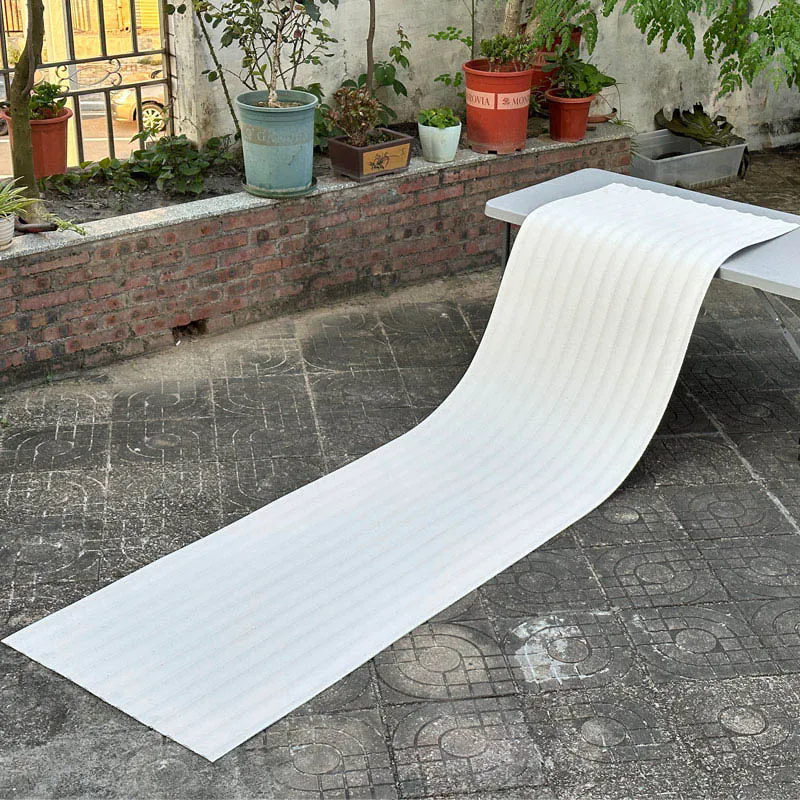What Makes Flexible Stone the Future of Interior and Exterior Design?
2024-11-26
In the world of modern architecture and interior design, innovation is key to transforming spaces in both functional and aesthetic ways. One of the latest trends in design materials is flexible stone, a revolutionary product that offers the timeless beauty of natural stone with an added twist—flexibility. But what exactly is flexible stone, and why is it becoming a game-changer for designers and architects?
What Is Flexible Stone?
Flexible stone is a composite material made from real stone and a flexible backing, typically made from fiberglass or polyester. This backing allows the stone to bend, mold, and adhere to curved or irregular surfaces, making it far more versatile than traditional rigid stone slabs. While the surface maintains the natural beauty and texture of stone, the flexibility allows it to be used in creative ways that would have been impossible with traditional stone.
Flexible stone comes in various types, including marble, slate, limestone, and even granite, offering a wide array of choices for designers looking to incorporate natural stone into their projects.
How Does Flexible Stone Compare to Traditional Stone?
1. Weight and Ease of Installation
Traditional stone can be incredibly heavy, requiring special tools and labor-intensive installation processes. In contrast, flexible stone is significantly lighter, which makes it easier to handle, cut, and install. This reduces the overall cost of installation and the need for specialized labor or equipment.
2. Versatility and Design Freedom
Unlike rigid stone, which is limited to flat surfaces, flexible stone can be used on curved walls, ceilings, columns, and even furniture pieces. Its adaptability opens up a world of design possibilities, enabling architects and designers to think outside the box and experiment with unique surfaces.
3. Durability and Aesthetic Appeal
Flexible stone retains the same aesthetic qualities as natural stone, including its texture, color, and pattern. It also shares many of the durability features of stone, including resistance to scratches, heat, and moisture. However, the flexible backing adds an extra layer of resilience, making it less prone to cracking or breaking compared to traditional stone.
What Are the Main Benefits of Using Flexible Stone?
1. Cost-Effectiveness
While natural stone can be expensive, flexible stone provides a more affordable alternative, offering the same elegant look without the high costs associated with heavy stone installation. Additionally, its lighter weight reduces transportation costs, making it a more economical option for large-scale projects.
2. Easy to Maintain
Like traditional stone, flexible stone is easy to clean and maintain, requiring only regular wiping to preserve its shine and finish. The flexible backing helps the material resist damage from impacts or vibrations, ensuring its longevity in high-traffic areas.
3. Sustainability
Flexible stone is considered more sustainable than traditional stone in some cases. Since it is made using thin layers of natural stone, it reduces the amount of raw material required for each project. Additionally, it can be used in renovation projects, allowing designers to repurpose and revitalize older surfaces with minimal waste.
Where Can Flexible Stone Be Used?
Flexible stone can be utilized in a variety of applications, both indoors and outdoors. Its adaptability and durability make it ideal for:
- Interior Walls and Ceilings: Transform a room with dramatic stone features on curved walls, vaulted ceilings, or partition walls.
- Exterior Facades: Flexible stone is weather-resistant and can be applied to the exterior of buildings, offering a natural stone aesthetic that complements any architectural style.
- Countertops and Furniture: Flexible stone can be used to wrap countertops, tables, or even custom-designed furniture, providing a cohesive and luxurious look.
- Architectural Features: From columns to staircases, flexible stone can be used on almost any surface, adding elegance to architectural elements.
What Are Some Creative Uses of Flexible Stone?
1. Curved Kitchen Islands
In kitchens, flexible stone can be used to create beautiful, continuous stone surfaces around islands, even if the island has rounded or irregular shapes. This allows for a seamless design without the need for multiple pieces of stone.
2. Stone-Wrapped Furniture
Flexible stone allows designers to wrap furniture pieces such as tables, chairs, or shelves in natural stone, turning everyday items into stunning works of art. This can create an upscale, modern aesthetic while maintaining practicality and durability.
3. Feature Walls and Backdrops
Flexible stone can be used for creating dramatic feature walls in living rooms, lobbies, or showrooms. Whether it’s a striking marble design or a natural stone look, it adds texture and sophistication without the bulk of traditional stone.



